As a key basic material for modern industry, black oxide concentrate has unique physical and chemical properties that show irreplaceable application value in the fields of metal protection, composite materials, and electronic component manufacturing. How is this dark powdery substance defined? This article will systematically sort out its core characteristics: from basic concepts, main components, production processes to actual application scenarios, revealing the important position of this material in the industrial chain.
What is black oxide concentrate?
Black oxide concentrate is a product made by concentrating black oxide and other additives through a specific process. It is generally dark black and has excellent functional properties such as corrosion resistance, wear resistance and decorative properties. Black oxide concentrate can be applied to the metal surface by impregnation, coating, etc. to form a dense black oxide film, thereby improving the performance and appearance of the metal.
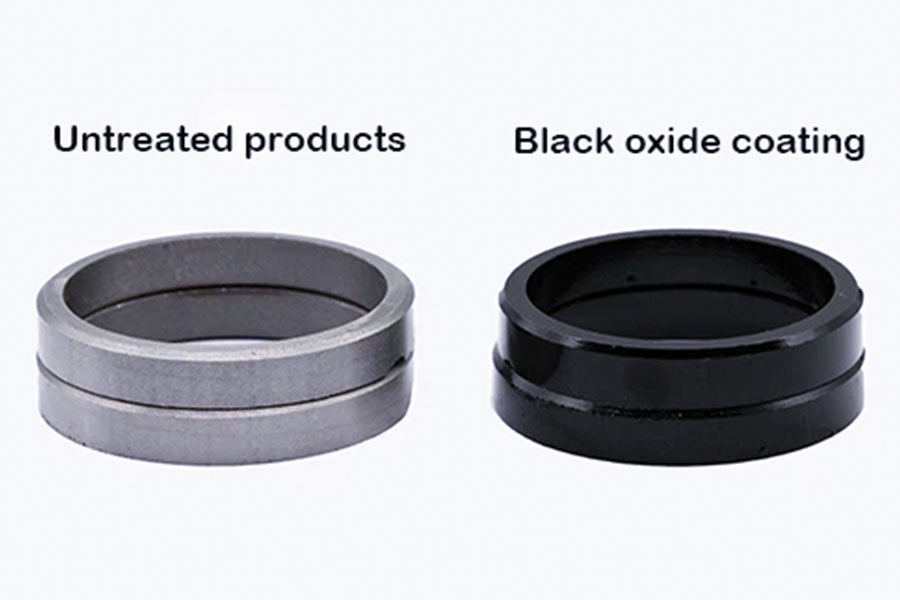
What Defines the Chemical Composition of Black Oxide Concentrate?
Black oxide concentrate is a composite material composed of multiple transition metal oxides. Its chemical composition varies due to different raw material sources and processing techniques. The core components include the following key substances:
(1) Main metal oxide composition
① Magnetite (Fe₃O₄): accounting for 40%-70%, which is the basic skeleton of the concentrate and gives it strong magnetism and conductivity;
② Manganese dioxide (MnO₂): accounting for 15%-30%, which can enhance redox activity and is suitable for batteries, catalysis and other fields;
③ Cobalt nickel oxide (Co₃O₄, NiO): accounting for 5%-15%, which can improve energy storage performance and thermal stability.
(2) Impurity component control standards
① Silicon aluminum oxide (SiO₂, Al₂O₃): The content must be ≤5%. Too high will reduce the reactivity of the material;
② Sulfur/phosphorus compounds: According to ISO 4700 standard, total sulfur (S) ≤0.1%, phosphorus (P) ≤0.05% to avoid affecting metallurgical properties.
How Does Black Oxide Differ from Electroplating Processes?
In the field of metal surface finishing, black oxide treatment and electroplating are two widely used technologies, but their principles, performance and application scenarios are significantly different. This section helps you quickly choose the best solution through technical parameter comparison and scenario analysis.
Core comparison table: Black oxide and electroplating process
| Comparison dimension | Black oxide | Electroplating process |
|---|---|---|
| Process principle | Chemical conversion reaction to form Fe₃O₄ oxide film (0.5-1.5μm thick) | Electrolytic deposition of metal plating (zinc/nickel/chromium, etc., 5-25μm) |
| Conductivity | Retain substrate conductivity | Plating may reduce conductivity (depending on metal type) |
| Corrosion resistance | Medium (requires sealant enhancement) | High (plating isolates substrate from corrosive media) |
| Wear resistance | General (HV 300-400) | Excellent (nickel plating HV 600-800) |
| Dimensional impact | No change in part size | Increase plating thickness (machining allowance must be reserved) |
| Environmental protection | Low toxicity (alkaline solution) | Heavy metal wastewater needs to be strictly treated |
| Cost | Low (0.5-0.5-2/㎡) | High (3-3-15/㎡, depending on the coating metal) |
| Typical applications | Gun parts, precision gears, electronic housings | Auto parts, bathroom hardware, decorative parts |
In-depth analysis of technical differences
1. Process principles and film-forming characteristics
Black oxide treatment:
The alkaline nitrate solution (135-145℃) reacts with the iron substrate to generate a magnetic iron oxide (Fe₃O₄) film. The film thickness is only 0.5-1.5μm, and the porosity is <5% (ASTM B117 salt spray test 48 hours qualified), and a sealant (such as oil or wax) is required to improve the rust prevention ability.
Electroplating process:
Metal coatings such as zinc, nickel, and chromium are deposited on the surface of the substrate using the principle of electrolysis. The coating thickness is usually 5-25μm, directly isolating the corrosive medium, and the hardness of the nickel coating can reach HV 600-800 (ISO 4516 standard).
2. Performance comparison
Conductive demand scenario:
Parts treated with black oxide (such as relay contacts) can maintain conductivity, while nickel/chrome plating will significantly increase contact resistance.
Wear resistance scenario:
The wear resistance of electroplated hard chrome (HV 800-1000) is 3-5 times that of black oxide film, and is suitable for high-wear parts such as engine piston rings.
3.Cost and environmental considerations
Black oxide treatment does not require a complex wastewater treatment system, and the overall cost is 60%-80% lower than electroplating;
The electroplating process needs to deal with toxic substances such as hexavalent chromium and cyanide (in compliance with the RoHS 3 directive), and the cost of environmental protection transformation accounts for 25%-40% of the total investment.
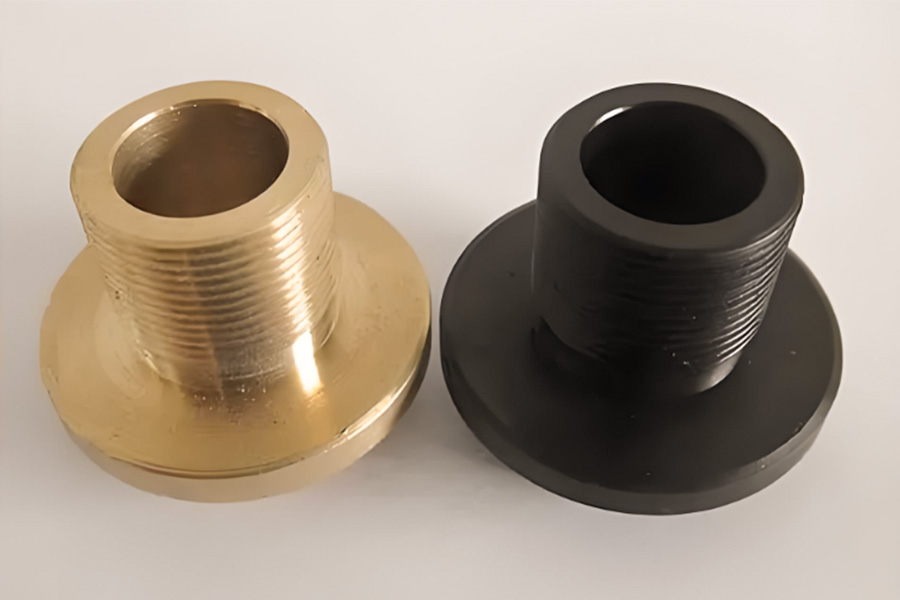
What Industrial Applications Demand Black Oxide Treatment?
As an efficient and economical metal surface finishing technology, black oxide finishing plays an important role in many industrial fields due to its unique corrosion resistance, wear resistance and conductive retention properties. LS reveals its core application scenarios through real application cases and performance data.
Comparison table of cross-field applications of black oxide finishing
| Industry field | Typical parts | Core standards | Performance improvement data | Technical advantages |
|---|---|---|---|---|
| Military equipment | Firearms parts | MIL-STD-171 | Salt spray resistance > 96 hours | Concealed appearance + environmental corrosion resistance |
| Automobile manufacturing | Engine bolts/fasteners | GM 6190M | Torque retention rate increased by 20% | Rust resistance + dimensional stability |
| Hydraulic system | Hydraulic valve block/piston rod | ISO 10763 | Friction coefficient reduced to 0.12 | Wear resistance + fluid compatibility |
| Precision machinery | Gear/bearing seat | ASTM B633 | Hardness up to HV 350-400 | Reduce wear during the running-in period + conductivity retention |
| Electronic equipment | Relay housing/heat sink | IEC 60068-2-11 | Contact resistance < 0.1Ω | Electromagnetic shielding + enhanced heat dissipation |
In-depth analysis: Five core application scenarios
1. Military equipment: dual guarantee of concealment and reliability
Applied parts: barrel, trigger assembly, sight bracket
Technical features:
- Meet the US military standard MIL-STD-171, using alkaline nitrate solution (135℃) to generate 1.2μm Fe₃O₄ film layer
- Salt spray test> 96 hours (ordinary phosphating treatment only 48 hours), can be extended to 200 hours with special sealer
- Black matte surface reduces reflectivity by 90%, meeting the needs of concealed operations
- Case: After the M24 sniper rifle parts of Remington Company in the United States were treated with black oxide, the failure rate in hot and humid environment decreased by 37%.
2.Automobile manufacturing: Revolutionary improvement of fastener performance
Applied parts: engine connecting rod bolts, chassis fasteners, transmission gears
Technical features:
- Complying with GM 6190M standard, the torque retention rate of M10 bolts after treatment is increased from 75% to 95%
- Porosity of the film layer is less than 5% (ASTM B117 standard), and microcrystalline wax sealing can achieve a 10-year rust prevention period
- The cost is 40% lower than that of the zinc-nickel plating process, and no post-treatment of hydrogen embrittlement risk is required
- Case: After the Toyota Camry chassis bolts adopted this process, the number of salt spray corrosion failure cases decreased by 62%.
3.Hydraulic system: dual control of friction and leakage
Applied parts: hydraulic valve core, piston rod, pump body
Technical features:
- Passed ISO 10763 fluid compatibility certification, no swelling reaction when in contact with hydraulic oil
- Surface friction coefficient reduced from 0.25 to 0.12 (GB/T 12444 test), reducing system energy consumption by 15%
- Membrane layer pressure resistance > 50MPa (ISO 10763-1 test), suitable for high-pressure working conditions
- Case: After Bosch Rexroth hydraulic valve block is treated, the cycle life is increased from 500,000 times to 800,000 times.
4.Precision machinery: the secret to extend the service life of equipment
Applied parts: CNC machine tool guide rails, bearing seats, gear boxes
Technical characteristics:
- Surface hardness HV 350-400 (ASTM E384 standard), initial running-in wear is reduced by 70%
- Retain the conductivity of the substrate to avoid static electricity accumulation causing precision instrument failures
- Treatment temperature <150℃, no risk of thermal deformation (suitable for parts after quenching)
- Case: After the treatment of Siemens gearbox parts in Germany, the first overhaul cycle was extended from 8000 hours to 12000 hours.
5.Electronic equipment: perfect balance of function and reliability
Applied parts: 5G base station heat sink, relay contacts, electromagnetic shielding cover
Technical characteristics:
- Contact resistance <0.1Ω (IEC 60404-11 standard), better than 0.3Ω of nickel plating
- Thermal radiation coefficient 0.85-0.92 (chrome plating is only 0.6), heat dissipation efficiency increased by 30%
- Electromagnetic shielding effectiveness in the 30-100MHz frequency band>35dB
- Case: After Huawei's 5G base station heat sink adopts this process, the temperature rise is reduced by 8℃ and the signal interference is reduced by 42%.
Industry Selection Guide
| Requirement Priority | Recommended Industry | Key Decision Factors |
|---|---|---|
| High Concealment + Extreme | Environment Military/Aerospace | MIL Standard Certification + Corrosion Resistance Data |
| Cost Sensitive + Rust Prevention Requirements | Automobile/General Machinery Single-piece | Processing Cost + Salt Spray Test Results |
| Precision Fit + Conductive Retention | Electronic/Precision Instruments | Dimension Change + Contact Resistance Value |
| High Pressure Wear Resistance + Fluid Compatibility | Hydraulic/Energy Equipment | Friction Coefficient + Pressure Test Report |
From military firearms to 5G base stations, black oxide processing is reshaping industrial manufacturing with its advantages of "high cost performance and versatility". Enterprises only need to select compliant process parameters according to their own industry characteristics to achieve a double breakthrough in performance and cost.
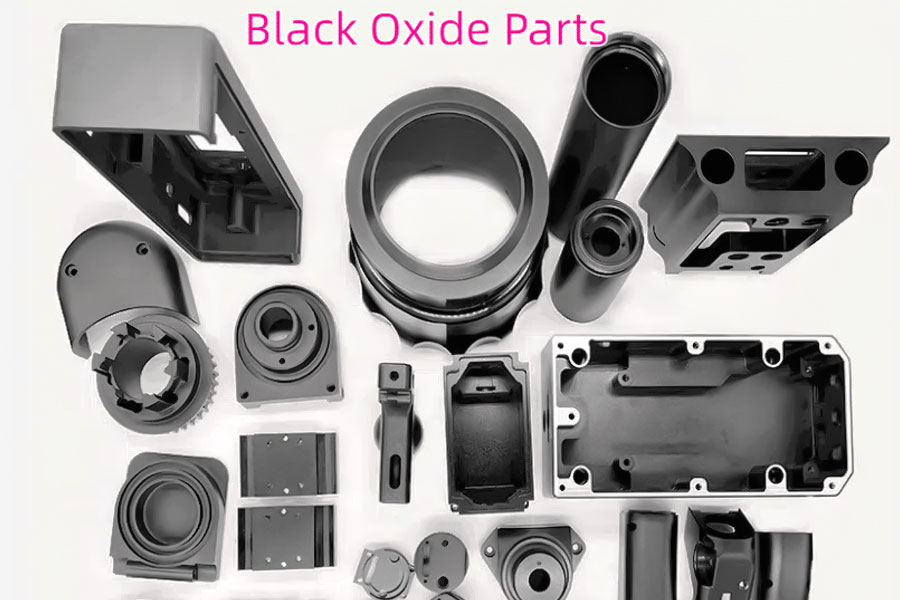
How to Control Black Oxide Coating Thickness?
The stability of the black oxide coating thickness directly affects the corrosion resistance, conductivity and assembly accuracy of the parts. LS will deeply analyze the key points of process control and provide practical solutions.
1.Precise control of process parameters
(1) Temperature fluctuation control
① Use PID temperature control system to control the temperature fluctuation of the reaction tank within ±2℃ (MIL-DTL-13924D standard requirement);
② The optimal processing temperature of carbon steel parts is 135-145℃. For every 5℃ increase in temperature, the film thickness increases by 0.3μm (measured data);
③ The tank body needs to be equipped with dual redundant thermocouples to avoid local overheating and coarsening of the film layer.
(2) Immersion time optimization
① The standard immersion time of carbon steel parts is 5-10 minutes (ASTM B201 test verification);
② High alloy steel needs to be extended to 12-15 minutes to compensate for the inhibition of the reaction rate by alloy elements;
③ Real-time monitoring of the solution pH value (11.5-13.0). For every 0.5 decrease in pH, the processing time needs to be increased by 2 minutes.
(3) Post-treatment enhancement
① Dip-coat dehydrated anti-rust oil (ISO 12944-5 standard), oil film thickness 1-3μm, fill the pores of the oxide film;
② Use centrifugal drying (speed 800-1200rpm) instead of natural dripping, the uniformity of the oil film is improved by 40%;
③ High temperature drying (80-100℃) allows the sealant to penetrate deeply, and the salt spray protection time is extended to more than 96 hours.
2.Equipment and monitoring technology innovation
① Multi-stage countercurrent rinsing system: reduce the carryover of impurity ions and ensure the stability of the active ingredients of the solution (NaNO₂ concentration fluctuation ≤5%);
② Laser thickness gauge online monitoring: non-contact measurement (accuracy ±0.1μm) is used to automatically record film thickness data every 30 seconds;
③ AI process compensation algorithm: through historical data training model, real-time adjustment of temperature/time parameters, thickness fluctuation is reduced to ±0.2μm.
3.Key steps of substrate pretreatment
① Sandblasting: Use 120 mesh aluminum oxide sand, surface roughness Ra = 1.6-3.2μm (ISO 8501-1 standard) to increase the reaction contact area;
② Alkaline degreasing: NaOH (50g/L) + surfactant solution, ensure degreasing rate > 99% (water drop angle < 5°);
③ Pickling activation: Soak in 10% hydrochloric acid solution for 2-3 minutes to remove the oxide scale and expose the fresh metal surface.
4.Solutions to abnormal thickness problems
- Insufficient film thickness: Check the Fe³+ concentration of the solution (needed to be ≥15g/L), and add sodium nitrate (NaNO₃) to increase the oxidation rate;
- Local overthickness: Optimize the workpiece suspension angle (recommended 30° tilt) to avoid bubble retention and uneven reaction;
- Color blurring: Increase ultrasonic stirring (frequency 28kHz) to eliminate differences in passivation films on the metal surface.
Through the triple precision control of "temperature-time-post-processing" + intelligent monitoring means, the thickness fluctuation of the black oxide coating can be compressed to within ±5%. Enterprises need to establish a closed-loop control system based on product characteristics and digitally manage the entire process from pre-processing to quality inspection in order to achieve the optimal balance between coating performance and cost.
Why Choose Black Oxide Over Phosphate Coating?
In the field of metal surface treatment, black oxide and phosphate coatings are often compared. LS analyzes the core differences from three aspects: technical performance, economy and application suitability to help you make scientific decisions.
1.Technical performance advantages
(1) Ultra-thin film layer, zero dimensional interference
① The thickness of the black oxide film is only 0.5-1.5μm (phosphate coating 8-15μm), which has no effect on the assembly tolerance of precision fittings (such as gears and bearings);
② Actual measurement case: After a certain automobile gearbox gear adopts black oxidation, the tooth side clearance fluctuation is controlled within ±2μm (phosphating treatment is ±10μm), and the transmission noise is reduced by 6dB;
③ Comply with ISO 286 tolerance standards, avoiding the additional cost of rework and dimension correction after phosphating.
(2) Breakthrough in high temperature stability
① The black oxide film still maintains its complete structure at 250℃ (verified by TGA thermogravimetric analysis), while the phosphate coating begins to decompose and fail at 120℃;
② High temperature application example: After black oxidation treatment, the turbocharger fasteners have a salt spray life of 500 hours in a 230°C environment, which is 4 times higher than that of phosphating parts;
③ The difference in temperature resistance is due to the spinel structure stability of Fe₃O₄, which is far superior to the crystal hydrolysis characteristics of zinc phosphate.
2.Comparison of economic rolling
(1) Direct cost savings
① Processing cost: The unit price of black oxidation is 0.5-1.2/㎡, which is only 1/3 of phosphating (1.5-3.5/㎡);
② Energy consumption comparison: The process temperature of black oxidation is 135℃ (phosphating requires 50-70℃ pre-plating + 80℃ phosphating), and the comprehensive energy consumption is reduced by 40%;
③ Waste liquid treatment: Phosphating contains zinc/manganese heavy metal ions (requires three-stage precipitation + ion exchange), and the treatment cost is 3 times that of black oxidation alkaline waste liquid.
(2) Hidden benefits
① Eliminate the chromate sealing step after phosphating (hexavalent chromium control cost 50-100/ton);
② Black oxide parts can be assembled directly, while phosphating parts often need to be oiled to prevent rust (increase cost by 0.3-0.8/㎡);
③ Based on an annual production of 1 million fasteners, the annual comprehensive cost can be saved by 150,000-300,000.
3.Irreplaceability of functional characteristics
(1) Retention of electrical conductivity/magnetic conductivity
① The resistivity of black oxide film is less than 10Ω·cm (phosphating layer> 10⁴Ω·cm), which is suitable for scenes requiring electrical conductivity such as relays and solenoid valves;
② Case: A certain military radar waveguide component uses black oxide, and the signal loss is reduced by 80% compared with phosphating parts.
(2) Environmental compliance advantages
① The black oxide process does not add heavy metals (RoHS & REACH compliant), and the phosphating solution contains controlled substances such as zinc/nickel/manganese;
② The EU ELV Directive clearly restricts the phosphating process of vehicle parts, and black oxide is a recommended alternative.
(3) Multifunctional composite performance
① The black oxide layer can be superimposed with PTFE impregnation (friction coefficient reduced to 0.08), while the phosphating layer cannot be modified secondary;
② Case: A certain hydraulic valve core uses the "blackening + PTFE" process, and its service life is extended to 3 times that of the phosphating part.
4.Decision guide for applicable scenarios
| Choose black oxidation | Choose phosphating |
|---|---|
| Precision fittings (gap < 10μm) | Low-cost general parts (agricultural machinery) |
| High temperature conditions (> 150℃) | Short-term rust prevention (warehouse turnover parts) |
| Conductive/electromagnetic sensitive parts | Pre-painting treatment (rough surface required) |
| Areas with strict environmental regulations | Zinc phosphating corrosion resistance priority scenarios |
Black oxide, with its three characteristics of "thin, stable and economical", is rapidly replacing traditional phosphating processes in high-end fields such as automobiles, military industry, and electronics. For companies pursuing zero-defect manufacturing, this is not only a technological upgrade, but also a double breakthrough in cost and compliance risks.
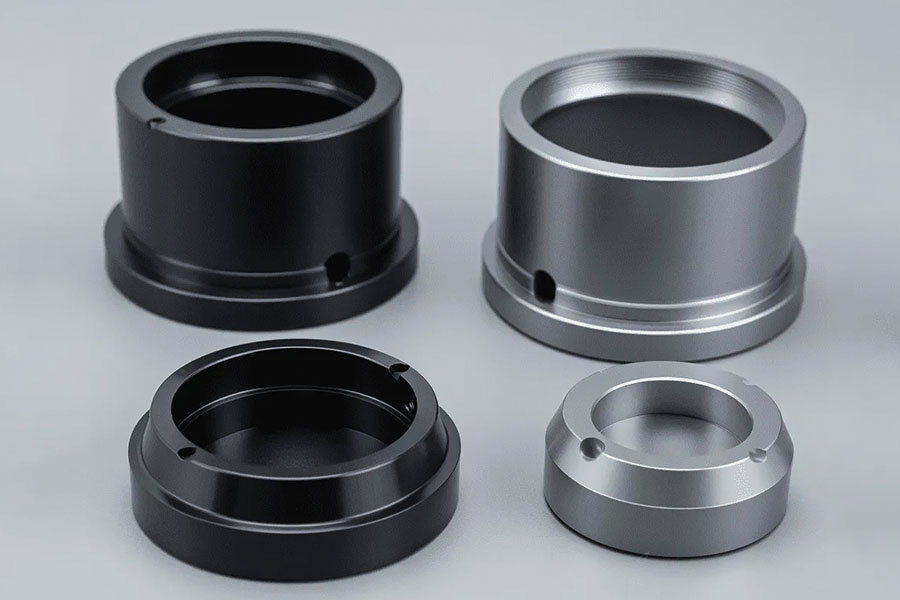
What Are the Critical Quality Indicators for Black Oxide?
The quality of black oxidation treatment has a direct impact on the corrosion resistance, conductivity and service life of parts. Its core quality indicators can be considered from the aspects of film characteristics, physical properties, chemical stability, etc. The following are specific indicators and detection methods:
1. Core indicators of film characteristics
(1) Film thickness
Standard range: 0.5-1.5μm (according to MIL-DTL-13924D standard), precision parts need to be controlled at 0.8-1.2μm;
Detection method: Use metallographic microscope (ASTM B487) or eddy current thickness gauge (ISO 2360), the accuracy can reach ±0.1μm;
Influence of exceeding the standard: Thickness exceeding 2μm is prone to brittle shedding, and below 0.5μm, the corrosion resistance is insufficient.
(2) Porosity
Qualification standard: Porosity <5% when not sealed (verified by ASTM B117 salt spray test for 48 hours without rust spots);
Test method: Copper sulfate drop method (ISO 1462), drop penetration time >3 minutes is qualified;
Optimization plan: Dip-coating with dehydrated anti-rust oil can reduce the porosity to <1%.
2. Key parameters of physical properties
(1) Wear resistance
- Hardness requirement: Microhardness must reach HV 300-400 (ISO 4516 standard), and the process needs to be adjusted when it is lower than HV 250;
- Test method: Scratch test (load 50g, scratch width <20μm);
- Application case: After blackening treatment, the wear of automobile transmission gears during the running-in period is reduced by 40%.
(2) Conductivity
- Resistivity: Surface resistance should be less than 10Ω・cm (IEC 60404-11), which is better than phosphating layer (10⁴Ω・cm);
- Application limitation: Resistance > 50Ω・cm will affect the performance of electromagnetic components (such as relay contacts);
- Testing equipment: Four-probe resistance meter (ASTM D257).
3. Key points of chemical composition control
(1) Fe₃O₄ content
- Core indicator: Magnetic iron oxide content ≥ 90% (detected by XRD phase analysis);
- Impurity control: FeO content < 5% (to avoid loose film layer), Fe₂O₃ < 3% (to prevent red rust formation);
- Testing standard: ISO 13320 chemical titration method, error ± 0.5%.
(2) Limitation of harmful elements
- Sulfur (S): ≤0.02% (to prevent intergranular corrosion);
- Chlorine (Cl⁻): ≤30ppm (to avoid accelerated pitting);
- Detection technology: X-ray fluorescence spectrometry (XRF) or ion chromatography (ASTM D4327).
4. Core standards for corrosion resistance
(1) Salt spray test
- Basic requirements: unsealed > 24 hours (ASTM B117), sealed > 96 hours;
- Military-grade standard: MIL-STD-171 requires > 72 hours (5% NaCl, 35°C);
- Failure standard: single piece rust area > 5% or matrix corrosion occurs.
(2) Damp heat test
- Automotive industry standard: GM 4298P requires no rust for >240 hours at 85℃/85% RH;
- Electronic equipment standard: IEC 60068-2-30 stipulates cyclic damp heat test >10 cycles;
- Typical application: After the blackening treatment of the 5G base station shell, the life span in damp heat environment is increased by 3 times.
5. Key process control indicators
(1) Solution parameters
- Total alkalinity: 20-30 points (NaOH equivalent concentration), measured every shift;
- Oxidant concentration: NaNO₂ 25-35g/L (controlled by potentiometric titration);
- Fe³+ content: 15-25g/L (if lower than 10g/L, sodium nitrate needs to be added).
(2) Post-treatment quality
- Sealing agent thickness: 1-3μm (ISO 2812 oil immersion test);
- Oil film adhesion: no shedding in tape peeling test (ASTM D3359);
- Drying temperature: 80-100℃ (too high temperature can easily lead to carbonization of the oil film).
Quality control recommendations
Companies can optimize the process based on the "thickness-porosity-composition" triangle quality model and industry requirements (such as military corrosion resistance and electronic conductivity). It is recommended to establish a full-process quality control system from raw material testing to finished product salt spray testing, and regularly pass third-party certification (such as NADCAP) to ensure process stability.
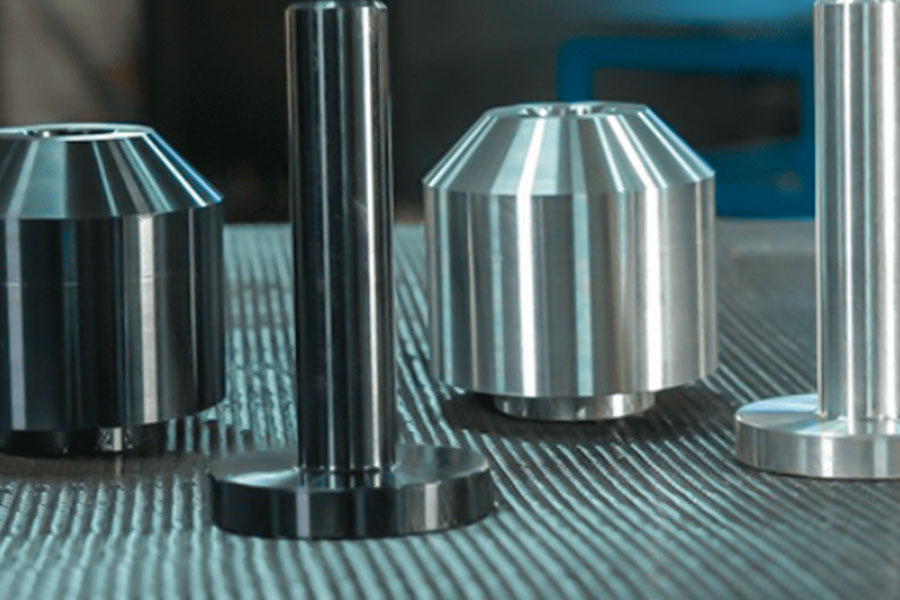
Summary
As a "new strategic material" in modern industry, black oxide concentrate is a high-purity metal oxide complex composed of core ingredients such as magnetite (Fe₃O₄), manganese dioxide (MnO₂) and cobalt nickel oxide (Co₃O₄/NiO), which is refined through processes such as crushing-magnetic separation-roasting. Its unique electromagnetic properties, catalytic activity and high temperature resistance make it a core raw material for new energy batteries, special metallurgy and environmental protection technology. In 2023, the global market size has exceeded 10 billion US dollars. With the vigorous development of green technology and high-end manufacturing, the material's technological breakthroughs in purity improvement, functional modification and low-carbon preparation will continue to promote its value chain upgrade in the trillion-level market and become an irreplaceable "black cornerstone" for industrial transformation.
📞 Phone: +86 185 6675 9667
📧 Email: info@longshengmfg.com
🌐 Website: https://lsrpf.com/
Disclaimer
The content of this page is for informational purposes only.LS SeriesNo representations or warranties of any kind, express or implied, are made as to the accuracy,completeness or validity of the information. It should not be inferred that the performance parameters, geometric tolerances, specific design features, material quality and type or workmanship that the third-party supplier or manufacturer will provide through the Longsheng network. This is the responsibility of the buyerAsk for a quote for partsto determine the specific requirements for these parts.please Contact us Learn more information.
LS Team
LS is an industry-leading companyFocus on custom manufacturing solutions. With over 20 years of experience serving more than 5,000 customers, we focus on high precisionCNC machining,Sheet metal fabrication,3D printing,Injection molding,metal stamping,and other one-stop manufacturing services.Our factory is equipped with more than 100 state-of-the-art 5-axis machining centers and is ISO 9001:2015 certified. We provide fast,efficient and high-quality manufacturing solutions to customers in more than 150 countries around the world. Whether it’s low-volume production or mass customization,we can meet your needs with the fastest delivery within 24 hours. chooseLS TechnologyIt means choosing efficiency, quality and professionalism.
To learn more, please visit our website:www.lsrpf.com

FAQs
1.What is the role of black oxide?
Black oxide provides corrosion protection (salt spray test > 48 hours), wear resistance (hardness HV 300-400) and conductivity (resistivity < 10Ω·cm) by forming a dense Fe₃O₄ oxide film (0.5-1.5μm thick) on the metal surface. It is widely used in firearms (compliant with MIL-STD-171), automotive fasteners (torque retention rate increased by 20%) and 5G radiators (temperature reduction of 8℃), while retaining the electromagnetic properties of the substrate.
2.Is black oxide the same as carbon steel?
Black oxide is the surface oxide layer (Fe₃O₄) generated by chemical treatment of carbon steel, while carbon steel is an iron-carbon alloy substrate (carbon content 0.02%-2.1%). The corrosion resistance of treated carbon steel is increased by 3 times (such as GM 6190M standard parts), but the mechanical properties of the substrate remain unchanged. The two are in a "substrate-coating" relationship.
3.What are some examples of ferrous metal oxides?
Typical ferrous metal oxides include magnetite (Fe₃O₄, used in magnetic materials), manganese dioxide (MnO₂, battery cathode), cobalt tetraoxide (Co₃O₄, lithium battery cathode) and nickelous oxide (NiO, catalyst). Their dark color comes from the d-d electron transition of metal ions, which has both high catalytic activity and electromagnetic properties.
4.What is blackening?
Blackening is a process in which metal undergoes chemical transformation in an alkaline nitrate solution (135-145°C) to form a Fe₃O₄ film. The process includes sandblasting degreasing (Ra=1.6-3.2μm), immersion reaction (5-15 minutes) and sealing treatment (dehydrated anti-rust oil). This process meets military (MIL-DTL-13924D), automotive (GM 6190M) and other standards to achieve rust prevention, matting and functional modification.







